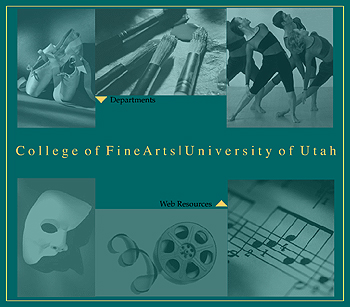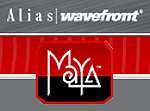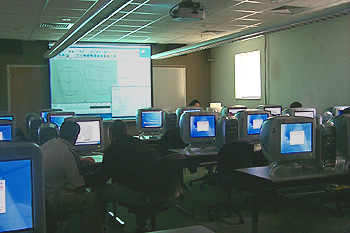U of U College of Fine Arts - 3D Computer Dynamics and Motion Class
By: Mikio Moriyasu - Revised: 2006-08-03 devinIntroduction

For the 2002 Fall Semester, the University of Utah College of Fine Arts offered "3D Computer Dynamics and Motion", a computer graphics design class developed around Alias/Wavefront's professional 3D production application, Maya.
Section Links
Setup and Preparation
 In order to accommodate the specific needs of this class, an entire Mac teaching lab had to be equipped with both OS X and Maya. Once configured, the teaching lab would then have to stay that way for the duration of the semester.
In order to accommodate the specific needs of this class, an entire Mac teaching lab had to be equipped with both OS X and Maya. Once configured, the teaching lab would then have to stay that way for the duration of the semester.Given these requirements, we decided to simply upgrade one of the more infrequently used teaching labs to the "Open Area - Mac OS X Only" configuration. The base configuration was then modified and optimized to run Maya. The Sage Point Teaching Lab proved to be ideal for this purpose for three reasons:
- The lab is located some distance away from the main campus in the Residence Halls and is not as widely reserved for classes as the more centrally located labs in the Marriott Library.
- Because it is not as widely used, there is virtually no demand to convert the lab back to the Mac OS 9.x environment that once existed there.
- At some point, the Sage Point Computer Lab was going to have a number of Mac OS X machines deployed in it anyway.
The Class
The primary focus of this class is the creation of computer graphics comprised of complex dynamics and motion that could be used for any professional application. The students are expected to develop a working knowledge of three-dimensional computer graphics technology as it applies to artistic design through Maya.
3-D creations in the non-sculptural visual arts, however, is largely an illusion created on 2-D surfaces using visual cues such as perspective and volumetric shading. Consequently, the students are also required to have a working knowledge of 2-D drawing and painting applications such as Adobe Illustrator 10.x and Adobe Photoshop 7.x. which are also used in the class.
As this is an art class, the students are expected to learn more than just the technical details of the digital tools they are using. To fully understand what is possible in this medium, the students research some of the greatest examples of computer dynamics and motion in film, music video, business presentations, games, and television. Ultimately, the students, motivated by music, poetry, movies, and other artwork, are encouraged to produce work that is both pleasing to the eye as well as displaying technical expertise.
Additional Information
For additional information regarding the following items, please select the appropriate link:Imaging Mac OS X with Radmind
- www.macosxlabs.org (link dead)
- University of Utah College of Fine Arts
- Fine Arts 4360 - 3-D Computer Dynamics and Motion Class Home Page (link dead)
- Documentation
- Administration
- Authentication
- General Software
- Hardware
- Miscellaneous
- Multimedia
- Networking
- Operating Systems
- Outside Presentations
- Programming & Scripting
- Security
- Servers
- Short Courses
- System Deployment
- System Utilities
- What's New

